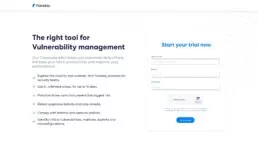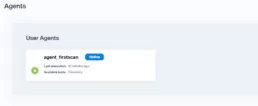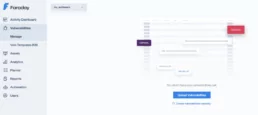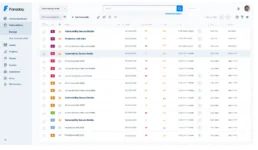Getting started: sign up and have a First Scan
How to sign up and run a first scan
How to get started / Getting started #1: Sign up and have a First Scan
Security has been available for the 1%. We believe that creating Open Source technologies and added value services can help address the problems of the 99%.
Learning about your vulnerabilities is the first step towards safety. With Faraday, you’ll get an overview of your security posture in just a few minutes, with just a few clicks.
About First Scan
Faraday Cloud (Community/Professional/Corporate) includes First Scan feature. It is an integrated scanner with Faraday Agents designed and tuned to discover the most common vulnerabilities in the attack surface. Faraday starts mapping your assets from your company domain name and drilling down on each to discover vulnerabilities using a tailor-made scanning profile. Once the task finishes, it is automatically pushed into your Faraday Workspace. After this, a notification will be generated; this process will run using Faraday Agents in the background.
1. Sign up
Getting started with Faraday software is as easy as signing up, with no installation required. Make the first step towards security with our Free trial, right now.

Once your account has been created, a confirmation email will be sent to the address provided. Remember to check your spam folder if needed.
2. Start scanning
Once you have signed in with your work mail, you’ll have the option to have a first scan, with just a click, to retrieve all the information you need to get started.
On your dashboard go to "Automation" and choose “Agents”.

Our First scan agent allows you to scan your domain and subdomains by just triggering the play icon.

Once the scan is completed, the results will be shown on your dashboard, in the “activity feed”.

